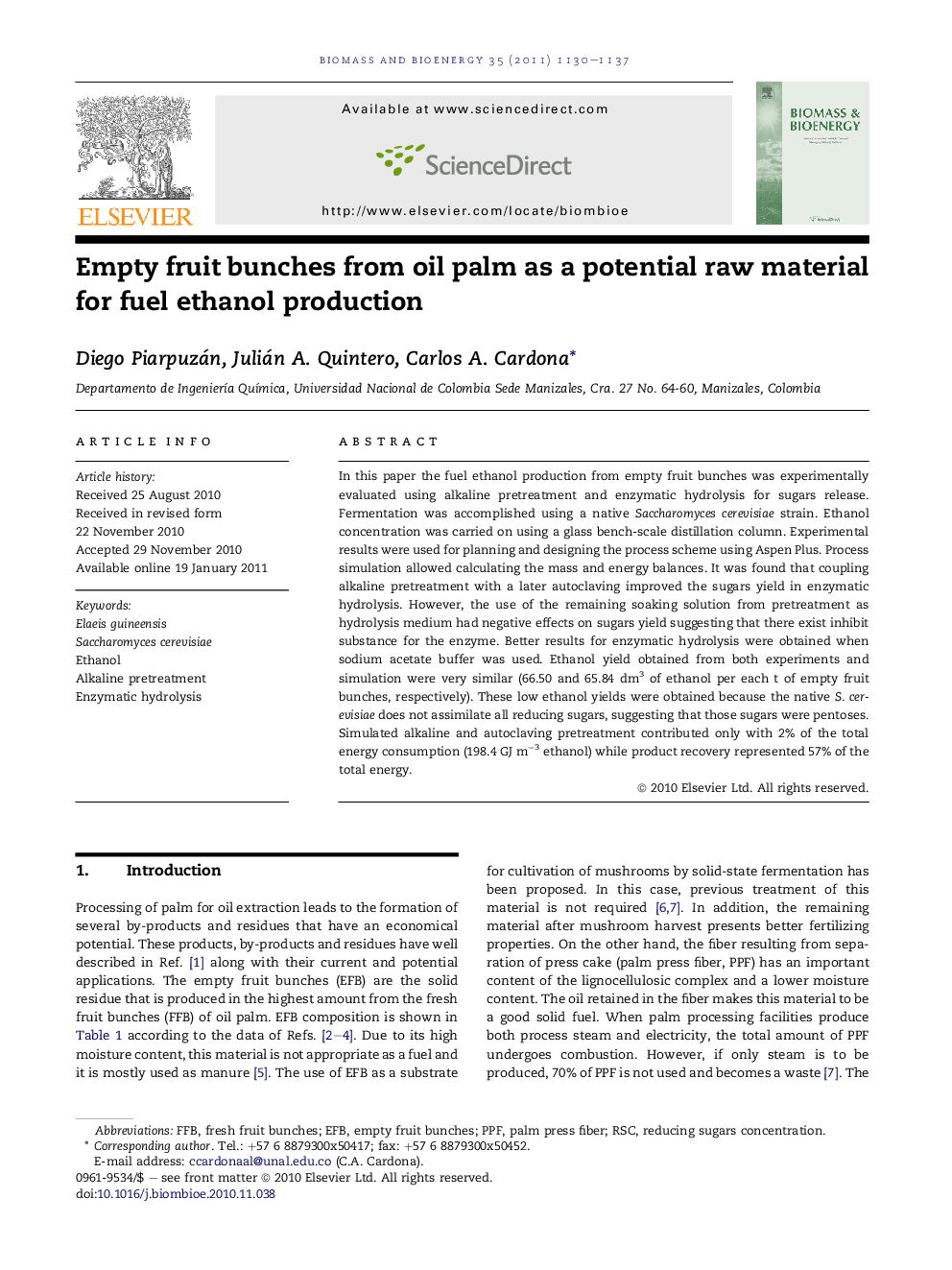| Article ID | Journal | Published Year | Pages | File Type |
|---|---|---|---|---|
| 10393812 | Biomass and Bioenergy | 2011 | 8 Pages |
Abstract
In this paper the fuel ethanol production from empty fruit bunches was experimentally evaluated using alkaline pretreatment and enzymatic hydrolysis for sugars release. Fermentation was accomplished using a native Saccharomyces cerevisiae strain. Ethanol concentration was carried on using a glass bench-scale distillation column. Experimental results were used for planning and designing the process scheme using Aspen Plus. Process simulation allowed calculating the mass and energy balances. It was found that coupling alkaline pretreatment with a later autoclaving improved the sugars yield in enzymatic hydrolysis. However, the use of the remaining soaking solution from pretreatment as hydrolysis medium had negative effects on sugars yield suggesting that there exist inhibit substance for the enzyme. Better results for enzymatic hydrolysis were obtained when sodium acetate buffer was used. Ethanol yield obtained from both experiments and simulation were very similar (66.50 and 65.84Â dm3 of ethanol per each t of empty fruit bunches, respectively). These low ethanol yields were obtained because the native S. cerevisiae does not assimilate all reducing sugars, suggesting that those sugars were pentoses. Simulated alkaline and autoclaving pretreatment contributed only with 2% of the total energy consumption (198.4Â GJÂ mâ3 ethanol) while product recovery represented 57% of the total energy.
Keywords
Related Topics
Physical Sciences and Engineering
Chemical Engineering
Process Chemistry and Technology
Authors
Diego Piarpuzán, Julián A. Quintero, Carlos A. Cardona,
